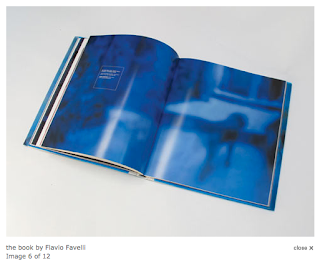 |
| Allan Kaprow, Days off. A calendar of Happenings, The Junior Council of the Museum of Modern Art, New York 1970 (immagine dal link) |
Anche se Kaprow li pensò come "ausiliari" alla sua attività organizzativa di performance, quindi realizzati con carta comune e senza particolari fronzoli, non smetterò mai di ammirare queste semplici "opere d'arte in tasca", prodotti dell'editoria di nicchia, curati nei dettagli e pensati per essere degli oggetti fuori dal comune.
Questa è una raccolta di 10 Happenings dal formato a calendario, perché si tratta di un elenco delle giornate dedicate a quegli eventi, da lui stesso inventati verso la fine degli anni Cinquanta. Momenti ad alto tasso artistico, ma sempre di svago, divertimento. Ed è per questo che li intitola "days off", momenti di pausa.
Il libro al momento si aggira sui 400-500 euro ed è probabile che salga ancora, assumendo un ruolo centrale nella storia dell'arte. Per una bibliografia completa delle opere di Kaprow consiglio questo bellissimo e documentatissimo libro di Giorgio Maffei, di cui potete sapere di più al link.
 |
| Giorgio Maffei, Allan Kaprow. A Bibliography, Mousse Publishing, Milano 2011 (immagine dal link) |
Although Kaprow conceived it as an auxiliary piece for his performance activity, so realized with common paper and without other decorations, I can't help but admire these simple "works of art in pocket". Highly qualitative editorial products curated in every detail and conceived to be objects out of common.
This is a calendar shape collection of 10 Happenings, that have been invented for the first time by him at the end of the 50s, listed day per day. His performances were very artistic moments, but also funny and pleasant; therefore he called it "days off".
Currently the book is on sale at 400-500 euros, but probably is going to get higher, assuming an important role in the history of art. For a complete bibliography of his works I suggest this beautiful and very documented book by Giorgio Maffei, about which you can know more at the link.
This is a calendar shape collection of 10 Happenings, that have been invented for the first time by him at the end of the 50s, listed day per day. His performances were very artistic moments, but also funny and pleasant; therefore he called it "days off".
Currently the book is on sale at 400-500 euros, but probably is going to get higher, assuming an important role in the history of art. For a complete bibliography of his works I suggest this beautiful and very documented book by Giorgio Maffei, about which you can know more at the link.









.jpg)




















